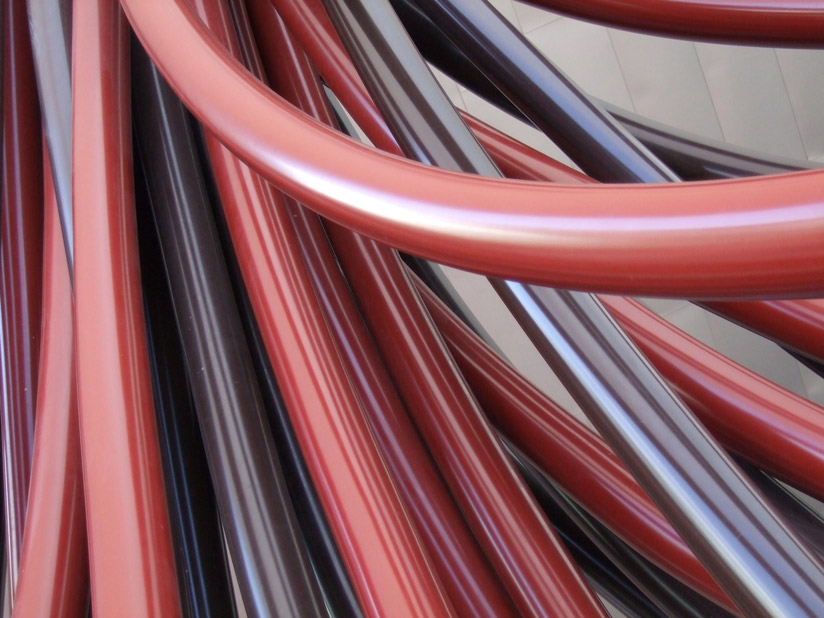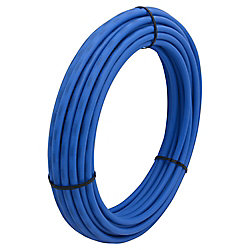Plastic plumbing vs Copper plumbing is top of mind if you are looking to add, replace or upgrade your plumbing. Here’s everything you need to know to make an informed decision on which is best for your project.
Is PEX pipe better than copper?
Technology often changes the choice of construction materials. Two decades ago copper pipe was not only state of the art when it came to plumbing, it was the only choice. Not so today. We have a choice between copper and a range of plastics including PEX pipe.
How does one choose?
As with most renovation choices it is a matter of weighing the pros against the cons in your particular situation.
Copper is familiar to most people and some feel it is more durable. Plastic products transfer less temperature, and are more energy efficient as a result.
Some areas still restrict the use of plastic products through building codes.
Copper is inexpensive, but takes some skill to work with.
If you are doing the work yourself, you must not only learn to properly solder joints, but must buy a torch, a pipe cutter, emery paper, flux and solder. Your choice of joints is limited to the selection carried by your local plumbing supply and home store.
Flexible Copper Tubing
Flexible copper tubing, while available, kinks easily and is not recommended for some applications. Joints must often be soldered in tight areas and there is a risk of fire. Leaking joints can be difficult to repair, especially for the novice.
Working With Copper Piping
The other side of copper is that it is readily available and has been in use for long enough that the codes are well-developed and easy to follow. Learning to solder fittings properly is not difficult and one can become proficient at it with practice. The tools and materials needed are inexpensive and readily available.
In many renovations copper is the choice made because it matches the existing plumbing. This makes joining it to existing plumbing extremely easy, but adaptors to join copper to plastic piping are available.
Plastic Piping is Growing in Popularity
Plastic piping is becoming more and more common in both renovations and new construction. It is easy to use, quick to install, durable and adaptable.

Are plastic plumbing pipes any good?
There is more than one kind of plastic piping suitable for plumbing use. The most common are CPVC (Chlorinated Poly Vinyl Chloride) and PEX (cross-linked polyethylene) tubing. Other types include PVC (Polyvinyl Chloride), ABS (acrylonitrile butadiene styrene), and polyethylene. These latter types are most often used for non-pressure applications such as sewage, industrial applications where potability is not a concern, and underground applications where exposure to UV rays is not an issue. For the purposes of this article, we will deal only with CPVC and PEX products.
CPVC Pipe
CPVC is generally available in non-flexible plastic piping. It is inexpensive and easy to use. Pipes and fittings are joined using glue that permanently welds the pipes together. To make a joint the pipe must first be cut with a pipe cutter or hacksaw, any burrs or rough edges sanded off, the pipe and fitting cleaned with a special solvent, then the proper glue applied and the pieces joined together. It is easy to do and, while attention must be paid to detail and you will become more proficient with practice, it requires no special skills.
When cutting CPVC piping, it is imperative that all cuts be straight, and that the proper solvent and glue be used.
PEX Pipe
PEX tubing is flexible enough that it can be gently curved around corners, reducing the number of joints required. It is joined together with fittings that require no glue or solder joints, and is even available in color-coded rolls to differentiate between hot and cold water lines.
Installation is easy and requires no special skills. The required tools are available at retail locations where the product is sold.
When using PEX, is important that you purchase the recommended tool for the fittings you are using and the brand name of tubing that you have purchased.
While the differences between the fittings and pipes may seem minor or non-existent, using the wrong tool to create a joint can lead to leaks. It is also important that you use the proper tubing for your application as not all PEX products are recommended for the supply of potable water. Your local plumbing supply stores or home centre will be able to point you to the proper materials and tools for your application.
As with copper and CPVC plumbing, care must be taken to cut all PEX tubing in straight, 90-degree cuts and to follow all of the manufacturer’s instructions.
Plumbing is fairly easy no matter which product you choose. Your choice should be made according to local code, your personal skill level, and your personal preferences. No matter which you choose, if done properly, plastic and copper piping will both give you years of trouble free service. – Text by Blair Korchinski
Your Questions Answered…

Photo Source
Pex pipe is by far the best plastic pipe for plumbing. It was made popular for its flexibility and low maintenance. It’s also more leak resistant than its predecessor, the copper pipe.
Latest posts by Canadian Home Trends (see all)
- Layer Up – Wrap Your Bathroom In Light - December 29, 2025
- The Power of Rest: Elevate Your Wellness with Better Sleep - December 29, 2025
- VERSATILE KITCHEN DESIGN - December 29, 2025







interesting makes me wonder what to do